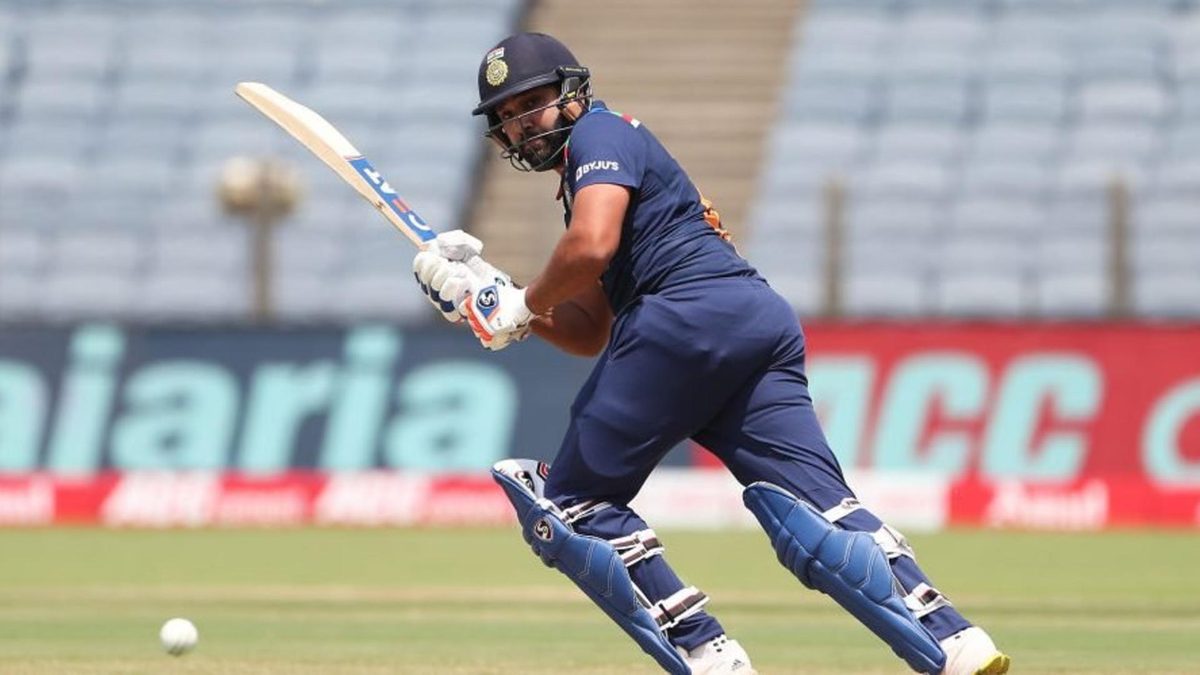
Sarah Waris argues that Rohit Sharma shouldn’t be anointed as the successor to Virat Kohli as India T20I captain.
When Virat Kohli confirmed he would depart as India T20I captain after the T20 World Cup later this year, rumours were rife about Rohit Sharma taking over the role ahead of the next edition of the tournament, slated for 2022.
With five IPL titles under his belt, the Mumbai Indians skipper has emerged as one of the shrewdest tacticians of the game. But while it’s tempting to hand over the job to the 34-year-old in Kohli’s absence, it’s a decision that would come with its own perils, and that should therefore be avoided.
The age factor
Rohit will be 35 by the time the 2022 T20 World Cup rolls around, and 37 during the 2024 edition. While he is as good as a batsman as he’s ever been, and age is unlikely to deter him as he looks to pile on the runs, his form should not allow us to overlook the greater picture. India’s success has relied on consistency in terms of captaincy over the last few years. MS Dhoni skippered India from 2008 till the end of 2014 in Tests and carried on for another three years across the shorter formats (he had the job from 2007). His successor, Kohli, has been the Test captain for seven years, and, if not for the bio-bubble restrictions and the hectic schedule, could possibly have continued leading India in T20Is as well.
India, thus, remains a side that has not typically shuffled their captains across much, and Rohit taking over the T20I leadership would mean that the team goes back to a trend they have been avoiding thus far, with another change likely to be necessary in the not too distant future. A lot can change in the course of the next four years, with injuries and loss of form, along with the increasing mental exhaustion of playing day-in, day-out in a restricted environment. The physical demands as one approaches 40 — not everyone can be James Anderson — coupled with the scrutiny in the Indian cricket circuit will take a toll, and the last thing that India requires is Rohit the batsman losing his touch due to the added responsibility.
India need Rohit the batsman more
Rohit, despite his impressive captaincy feats, does not have the best record as a batsman while leading Mumbai Indians. Since 2014, he has averaged over 35 just twice in an IPL season, and while it can be argued that the parameter is overrated in T20s, what is not is strike rate. Rohit has batted with a SR in excess of 130 three times since 2014 but has not struck at over 129 in the last three editions. Since 2019, he has scored six fifties in 34 matches with a high score of 80. In the powerplay since 2019, his strike rate falls to 125, his indifferent batting form was camouflaged by the depth of the successful franchise.
If Rohit failed, there was always Quinton de Kock, Suryakumar Yadav, Keiron Pollard, Ishan Kishan, or Hardik Pandya to play a defining knock, which reduced the pressure on the opener a great deal. He could pull the strings and orchestrate the team’s success, knowing the others could pick up the slack.
However, in the India setup, Rohit has a larger role to play. In wins, he averages 40.50 in T20Is with three hundreds and 19 fifties. In short, when he does well, India have a larger shot at succeeding. With an unsettled middle order for the upcoming T20 World Cup, India will rely heavily on their openers, especially Rohit, to lead the way, and that’s likely to continue after Kohli steps down too. Unlike at MI, India does not have the luxury of a misfiring Rohit in the side: he is their mainstay, and an in-form batsman at the top is a bigger priority.
A younger captain can learn from having Rohit and Kohli around
Consider this: would you prefer giving the captaincy to a younger captain in either KL Rahul or Rishabh Pant for the T20 World Cup next year, and grooming him for the 2024 tournament with guidance while Kohli and Rohit are still around? Or would you want him to step in to lead a team three years later when the giants might not be at their peak, or maybe not even in the side? It is not to say that the latter task is impossible, but in a sport where the only certainty is uncertainty, would it not be a better move to have a young captain around two stalwarts while they are in decent touch? Both Kohli and Rohit have been in innumerable pressure situations and can pass on their tips to the future skipper, which will hold him in better stead come the 2024 World Cup when he has a younger side to lead.
There’s also the matter of succession-planning in other formats to consider. While it’s hoped that Kohli will be around for a long while yet, his decision is a reminder that he can’t go on forever, and at some point India will need new captains in Test and ODI cricket. Given his age, it’s unlikely Rohit will fulfil those roles full-time. So surely better to see how the potential future candidates fare with the burden of leadership in one format, rather than potentially landing them with all three roles at a period of flux for the national side?







